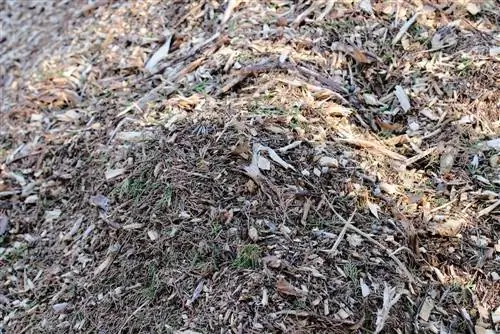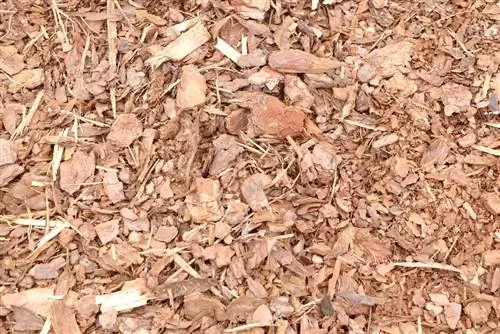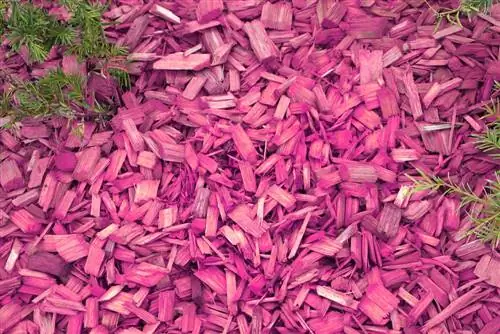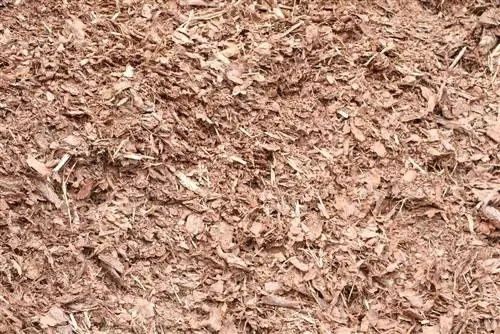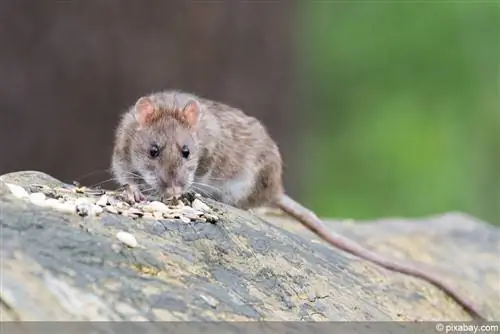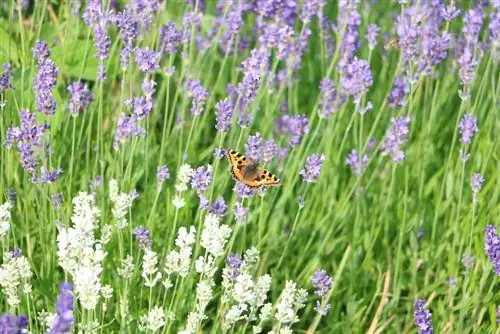- Author admin [email protected].
- Public 2023-12-17 03:39.
- Last modified 2025-06-01 06:48.
A layer of mulch in the garden has many benefits, regardless of where exactly it is applied. Mulch can protect paths from weeds, keep the soil in beds loose and provide nutrients to trees or shrubs over a longer period of time. Soil erosion is also successfully reduced with a layer of mulch. However, bark mulch is particularly important for weed control.
Bark mulch properties
Mulch made from the bark of coniferous trees comes from waste from the wood industry. The pieces of bark are crushed and sieved. They are available commercially in packages with different grain sizes, which are suitable for different purposes. A large grain size is suitable for large areas; smaller pieces of bark are suitable for small areas, especially between plants. Small bark mulch is preferred in the bed, as it releases nutrients during the rotting process.
Note:
As the decomposition process begins, nitrogen is consumed. If bark mulch is used in the vegetable bed, nitrogen fertilization should be carried out promptly.
Rapid decomposition of the bark mulch is undesirable on paths or large areas. Larger pieces are used there or wood, which is more durable.
Weeds and bark mulch
Many seed weeds are light germinators. A mulch layer of bark pieces ensures that little or no light can penetrate to the ground. This prevents seeds from germinating. Even dark germs cannot grow very well without light and are easy to pull out due to the loose structure of the mulch. In addition to darkening, bark mulch also inhibits the growth of weeds due to the tannins it contains.
Note:
However, these tannins can also prevent other plants from growing. It can make sense to use certain types of mulch for certain plants, such as rose mulch.
Use in the bed
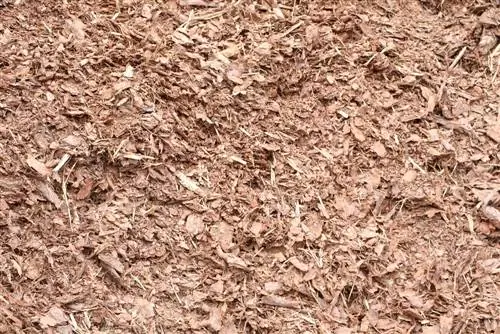
No matter whether bark mulch is to be used on vegetables, strawberries or flowers, it must always be remembered that the mulch acidifies the soil and thus shifts the pH value. Some plants like this, such as blueberries, but others prefer neutral soil. The requirements of the plants on the bed must therefore be clarified beforehand. The bark mulch is then applied as follows:
- Raking the bed between the plants
- Soil is loosened up
- remove existing weeds including the roots
- Distribute low-grain bark mulch generously between the plants
- The aim is for a layer thickness of 5 - 10 cm
- Simultaneous administration of nitrogen fertilizer
- Refill the mulch layer regularly
You can start with a thin layer of mulch. If weeds grow through, the layer can be reinforced at any time. The bed no longer needs to be raked, otherwise the bark mulch would be added to the soil and protection against weeds would no longer be provided. Watering is done directly on the plants or on the mulch. Positive properties of the mulch layer:
- Protection from weeds
- reduced evaporation, less watering necessary
- after initial fertilization, nutrient supply over a longer period of time
- Soil remains loosened
- Soil organisms are protected from external influences
Paths and larger areas
If paths in the garden are not paved or overgrown with grass, they should often be kept free of weeds. Bark mulch is also good for this. It also doesn't matter that the pH value of the soil can drop. The same applies to larger, open areas in the garden. In addition to the coarse-grained bark mulch, a weed fleece is also necessary.
- Cut weed fleece to the required size
- Removing weeds from paths or places
- Leveling areas
- Laying weed fleece
- Apply bark mulch in a layer that is not too thick
Too much bark mulch is unnecessary, as the weed fleece already curbs the growth of the plants. The mulch is just an additional protection and more decorative than the fleece.
Shrubs

Newly planted shrubs especially like a layer of mulch around the root area. This prevents drying out and deprives the weed of the opportunity to grow as a competitor to the bush. In addition, the soil area is continually fertilized over a longer period of time. Plants that prefer acidic soil particularly benefit from bark mulch. These include blueberry bushes and rhododendrons. Bark mulch can be spread on the soil directly when planting a shrub or later.
- Plant a shrub or bush according to instructions
- free the root area of old bushes from weeds
- Loose the soil, be especially careful with shallow roots
- Spread bark mulch over the clean root area
- choose medium to large grit
- Apply a layer about 10 cm thick
- renew bark mulch depending on the speed of the decomposition process
Trees
The tree slice of young trees, especially fruit trees, should be kept free of any vegetation. Older trees, on the other hand, enjoy a cover of soil-improving plants. Bark mulch, together with weed fleece, is ideal for keeping tree sections clear. A tree roots in approximately the same area as its crown grows. The tree disc therefore corresponds to the crown diameter. As with shrubs, it is important to find out about the soil requirements beforehand with trees. Not all trees tolerate acidic soil; other mulch may have to be used instead of bark mulch.
- Plant the tree according to the instructions, but don't forget the support
- Cut weed fleece to fit the size of the tree disc
- Root area can also be made larger
- remove more soil when planting
- Cut weed fleece up to the middle
- Cut holes for tree and support
- place on the ground around the tree and support pole
- Cover the weed fleece generously with bark mulch
- coarse grain in a thin layer is sufficient
Watering the young tree is easily possible through the fleece and mulch. The situation is different with fertilizing, especially if coarse fertilizer such as compost or rotted manure is to be used. To do this, the mulch and fleece must be removed. The fertilizer is then worked superficially into the soil. Fleece and bark mulch are then reapplied.
Other mulch material
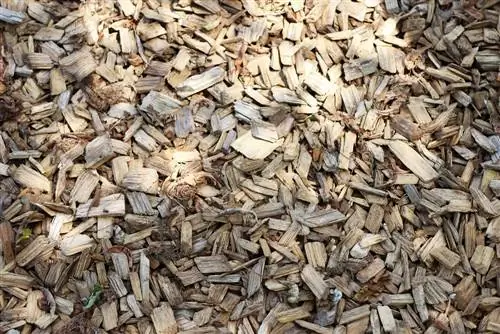
In addition to the classic bark mulch made from softwoods, there are also other materials that are suitable for mulching. Wood chips are cheaper and acidify the soil less. Pine mulch is particularly decorative and long-lasting. There are almost always green clippings and weed remains in the garden. Tree or shrub cuttings are also suitable for mulching if they come from he althy plants and are chopped into small pieces.

